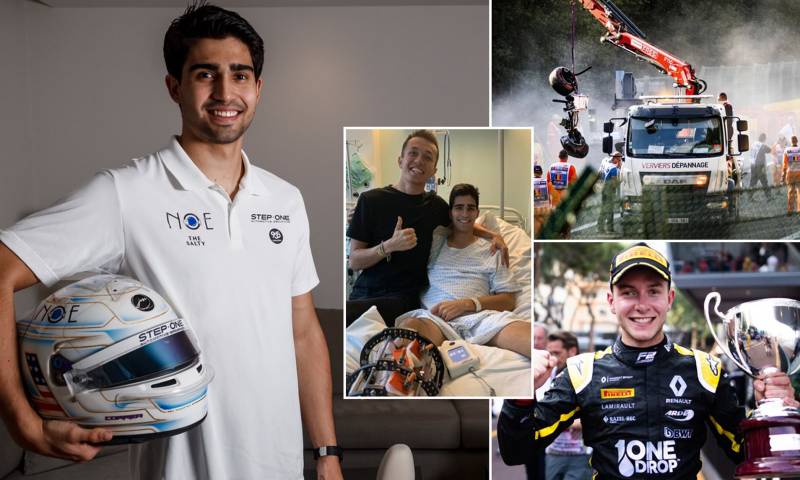Courageous Correa returns, 20 months after tragic accident that killed fellow driver

Stay tuned with 24 News HD Android App

Racing driver Juan Manuel Correa considers he is more "crazy than brave" as he returned to the Grand Prix circuit on Saturday 20 months after being involved in the accident that killed his friend Anthoine Hubert.
The Ecuadorean-born 21-year-old suffered terribly, both physically and mentally, after the Formula Two crash at Spa-Francorchamps that claimed Hubert's life, and changed his own irrevocably.
"It will define and has defined who I am," he told AFP candidly this week in Barcelona ahead of his comeback in the season-opening Spanish Formula 3 Grand Prix
"I always say there was a Juan Manuel Correa before the crash and there will always be a Juan Manuel Correa after the crash."
He has had to make his peace with his role in the tragedy when his out-of-control-car collided with Hubert's in Belgium on August 31, 2019.
"You feel like you have blood on your hands, which is something I never thought I would feel in my life, but it never came to a point where I was feeling guilty.
"I was just feeling in shock like: I killed my friend, it's nobody's fault but it happened. It was a very creepy feeling."
Correa suffered severe leg fractures. He underwent a 17-hour operation and spent more than two weeks in an induced coma.
"My right leg got stuck inside of the cockpit, and it was kind of bent the wrong way, like a doll nearly."
Correa had to make a choice -- lose the right leg or try to save it with surgery which he might not have survived.
"At the end it was a good decision to try and save the leg. I don't think I would go through it again next time, I would rather just chop it off to be honest," he says.
"It was too much. I wouldn't recommend it to anyone."
I am a racer
He has held on to his blood-soaked overalls.
"It hasn't been washed, it's nasty. I am going to frame it and put it on a wall."
Over the many months of rehab and "excruciating" pain with his mind descending "into some very dark and deep holes", his dream of driving in Formula One kept him going.
"I was never suicidal, but I was suffering being alive," he recalled.
"I feel a bit more crazy than brave to be honest.
"This is what I really needed to be saved in a way, to come back.
"My dream is still alive, I want to make it.
"I know I can. If I don't make it to F1, it's not going to be because of my physical limitations, that's for sure."
Aside from a softer brake his car this weekend had the same set-up as his rivals on the grid for Saturday's remarkable return.
He says he felt being off the radar for so long was a major handicap, with the likes of Mick Schumacher, Yuki Tsunoda and Nikita Mazepin graduating to the F1 fast lane.
"I could see how my friends and rivals were continuing with their careers and I was stuck in a wheelchair."
"I felt like I had jumped off the train and my wagon was leaving in a way."
He recalls a conversation with the boss of French F3 team ART Grand Prix, Sebastien Philippe, when still wheelchair-bound about securing a drive.
"The first thing Seb said to me was 'it's a bit early for 2022'. I told him I was looking at 2021."
In Barcelona on Saturday one chapter in Correa's story ended, and another begun..
"I truly believe deep down that I am a racer," he said.
"But it will take some time to get back into the rhythm. It's race week and I feel kind of lost in the sense that before I knew what mindset I had to be in. Now I am like indecisive and just with this feeling of not being sure what to expect."
One thing he could expect was a welcome befitting a courageous and committed driver as he resumed the job that almost killed him, but that has also kept him alive.
He finished 15th in Saturday's comeback race which was won by his teammate, Alexander Smolyar, who said: "I really respect Correa for what he has been through and how he has managed to come back.
"I am really happy for him. As much as I want to beat him on track, I hope he does really, really well this season."
